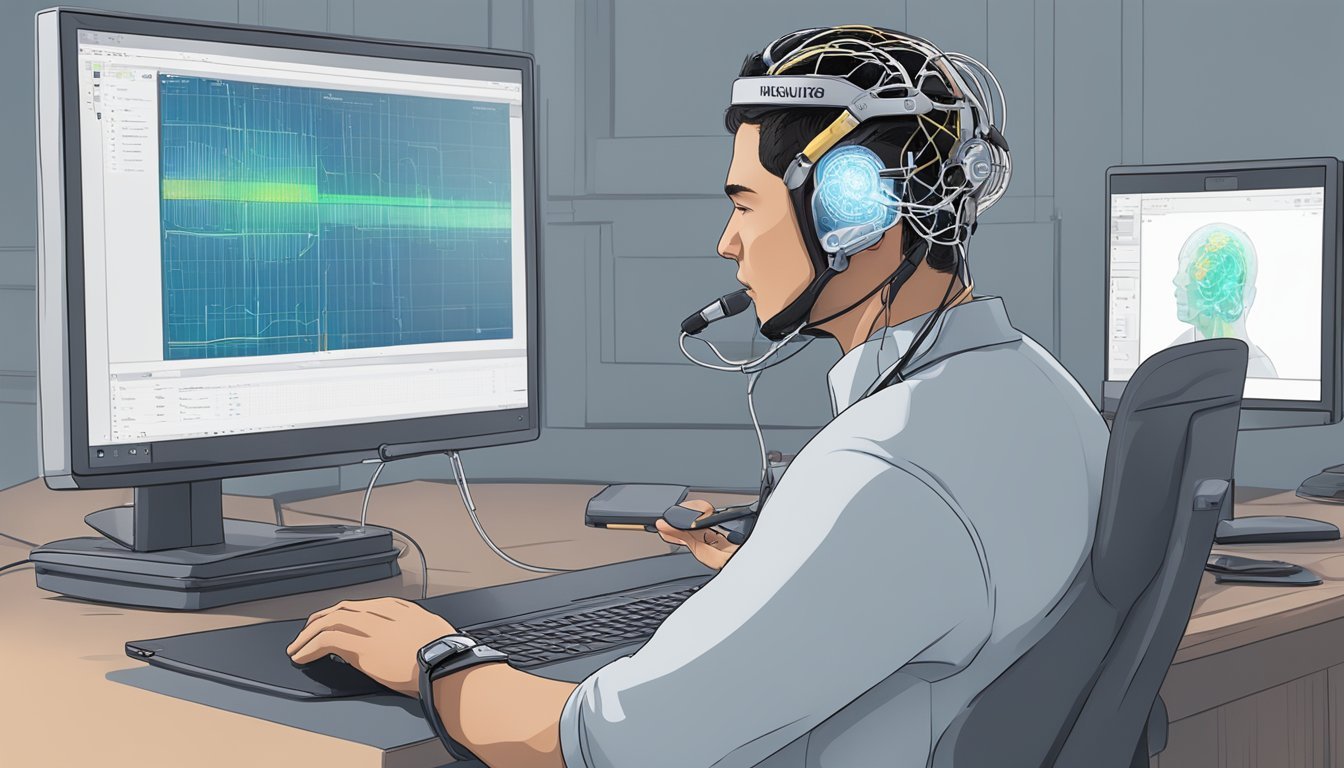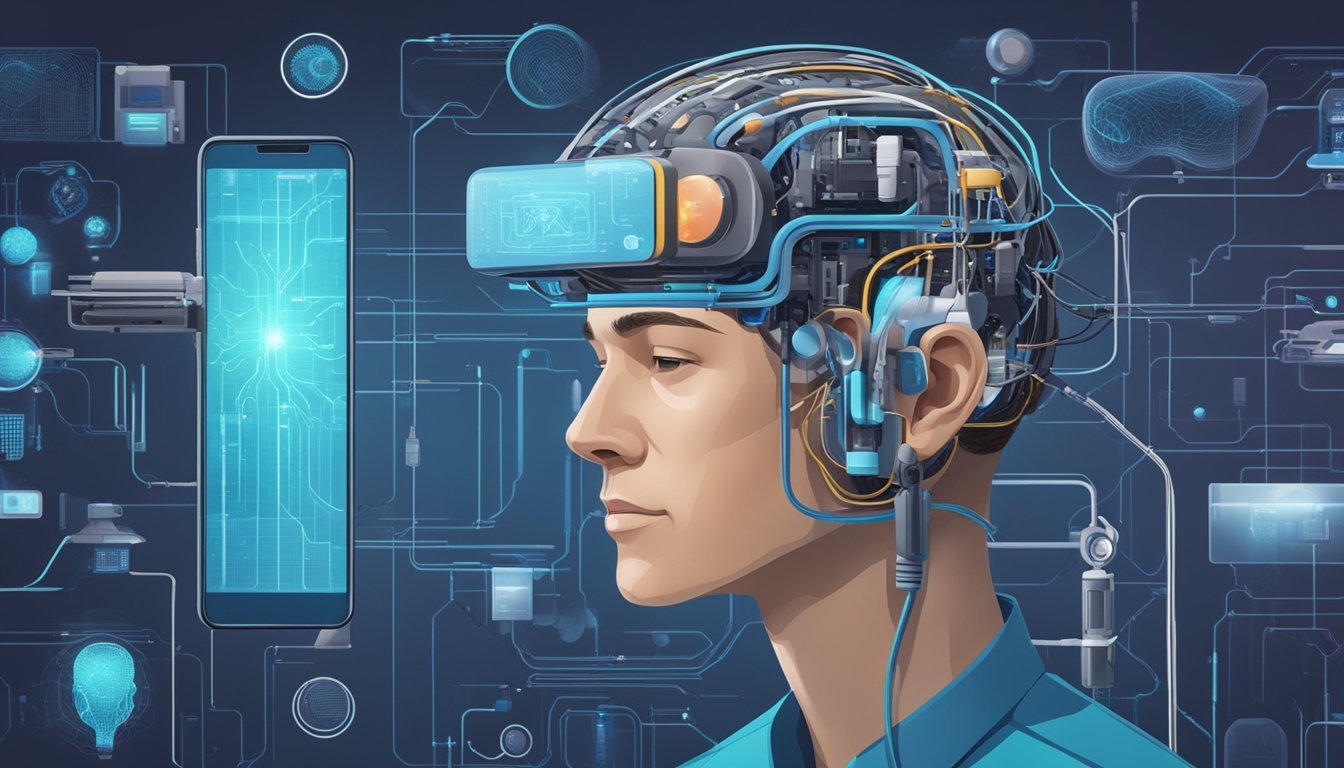Neuralink First Patient: Mind-Controlled Tech Gives Paralyzed Man New Life!
Neuralink, Elon Musk's brain-computer interface company, recently implanted its first human patient with a brain chip. The recipient, 29-year-old Noland Arbaugh, has been paralyzed from the shoulders down for eight years following a diving accident. Using only his mind, Arbaugh can now control a computer cursor, play chess, and even engage in online gaming.
This groundbreaking achievement marks a significant milestone in the field of neurotechnology. Arbaugh reports feeling a newfound sense of independence and the ability to multitask with his brain. The Neuralink device allows him to perform various activities simultaneously, showcasing the potential of brain-computer interfaces to enhance human capabilities.
While initial results appear promising, it's important to note that this is just the beginning of Neuralink's clinical trials. The company aims to develop technologies that could help people with neurological conditions regain mobility and communication abilities. As research progresses, scientists and ethicists will continue to monitor the long-term effects and implications of brain-computer interfaces on human cognition and society.
Overview of Neuralink
Neuralink is a neurotechnology company developing brain-computer interfaces. The company aims to create devices that can be implanted in the human brain to enhance cognitive abilities and treat neurological conditions.
Neuralink's Mission and Vision
Neuralink's primary goal is to create a seamless interface between the human brain and computers. The company envisions a future where people can directly interact with digital devices using their thoughts. This technology could potentially help individuals with paralysis regain mobility and communication abilities.
Neuralink also aims to advance medical treatments for neurological disorders. The company's brain-computer interfaces may offer new ways to address conditions like Parkinson's disease, epilepsy, and depression.
Elon Musk and Neuralink
Elon Musk co-founded Neuralink in 2016. As the company's CEO, Musk has been a driving force behind its ambitious goals and rapid development. He believes brain-computer interfaces will be crucial for humanity to keep pace with artificial intelligence advancements.
Musk's involvement has brought significant attention and funding to Neuralink. His track record of success with companies like Tesla and SpaceX has raised expectations for Neuralink's potential breakthroughs in neurotechnology.
What Is a Brain-Computer Interface?
A brain-computer interface (BCI) is a direct communication pathway between the brain and an external device. BCIs capture brain signals, interpret them, and translate them into commands for computers or other devices.
Neuralink's BCI involves implanting tiny electrodes into the brain to record neural activity. These signals are then processed and transmitted wirelessly to external devices. The technology aims to allow users to control computers, smartphones, or prosthetic limbs with their thoughts.
BCIs have potential applications in medicine, assistive technology, and human augmentation. They could help restore sensory and motor functions in people with disabilities or enhance cognitive abilities in healthy individuals.
Neuralink's First Patient
Neuralink's inaugural human trial marked a significant milestone in brain-computer interface technology. The first patient, Noland Arbaugh, demonstrated the system's potential to restore independence for individuals with paralysis.
The Journey to Human Trials
Neuralink, founded by Elon Musk, received FDA approval for human trials in May 2023. The company's brain implant aims to help individuals with neurological conditions control devices using their thoughts.
The first implantation took place in January 2024. This achievement followed years of research and development, including animal trials and rigorous safety testing.
Neuralink's device consists of a chip implanted in the brain and a wireless transmitter. It interprets neural signals, allowing users to control external devices through mental commands.
Profile: Noland Arbaugh's Story
Noland Arbaugh, a 29-year-old man paralyzed from the shoulders down, became Neuralink's first human subject. He suffered a diving accident eight years prior to receiving the implant.
Arbaugh demonstrated the technology's capabilities by playing online chess and controlling a computer cursor with his mind. He reported feeling "constantly multitasking" with his brain, describing a new sense of independence.
In a video released by Neuralink, Arbaugh shared his experience, highlighting the non-invasive nature of using the device. He expressed optimism about the technology's potential to improve his quality of life.
Medical and Ethical Considerations
The Neuralink trial raises important medical and ethical questions. While the technology shows promise for restoring function to those with paralysis, long-term effects and potential risks remain under scrutiny.
Ethical concerns include data privacy, cognitive enhancement implications, and equitable access to the technology. Medical professionals emphasize the need for continued monitoring and transparent reporting of outcomes.
The trial's success could pave the way for broader applications in treating neurological disorders. However, experts caution that widespread use may be years away, pending further research and regulatory approvals.
Technology Behind Neuralink
Neuralink's brain-computer interface relies on advanced neurotechnology to connect the human brain with computers. The system uses tiny electrodes to detect and transmit neural signals, enabling direct communication between the brain and external devices.
Understanding Brain Implants
Neuralink's brain implant is a small chip surgically inserted into the brain. The device contains thousands of microscopic electrodes that interface directly with neurons. These electrodes are capable of both recording brain activity and stimulating neural tissue.
The implant is designed to be biocompatible, minimizing the risk of rejection by the body. It's powered wirelessly, eliminating the need for external wires or batteries. This allows for long-term use without the need for frequent replacements or adjustments.
The Role of Electrodes in BCI
Electrodes are the crucial link between the brain and the computer interface. Neuralink uses flexible polymer threads, each thinner than a human hair, containing multiple electrodes. These threads are precisely inserted into specific brain regions.
The electrodes detect electrical signals produced by neurons when they fire. They can also stimulate neurons by delivering small electrical currents. This two-way communication allows for both reading brain activity and potentially influencing neural processes.
The high number and density of electrodes in Neuralink's system provide a more detailed and accurate picture of brain activity compared to traditional BCI technologies.
Signal Processing and Interpretation
Once the electrodes capture brain signals, sophisticated algorithms process and interpret this data. Machine learning techniques are employed to decode neural patterns and translate them into meaningful commands.
The system must filter out noise and identify relevant signals among the vast amount of brain activity. It then maps these signals to specific actions or intentions, such as moving a cursor or typing text.
Real-time processing is crucial for responsive control. Neuralink's chip includes on-board processing capabilities to handle some of this computation locally, reducing latency and improving system performance.
As users interact with the system, adaptive algorithms continuously refine the interpretation of brain signals, potentially improving accuracy and responsiveness over time.
Applications of Neuralink's Brain-Computer Interface
Neuralink's brain-computer interface (BCI) demonstrates promising applications for individuals with paralysis. The device enables direct neural communication, opening up new possibilities in gaming, communication, and potential future uses.
Communications for the Paralyzed
Neuralink's BCI offers a groundbreaking method for paralyzed individuals to interact with the world. The device translates neural signals into digital commands, allowing users to control computers and mobile devices through thought alone.
This technology enables typing, messaging, and browsing the internet without physical movement. For those with severe paralysis, the BCI provides a crucial link to communicate basic needs and engage in social interactions.
The system's ability to interpret complex neural patterns may lead to more natural and fluid communication methods in the future.
Gaming and Entertainment
Neuralink's first patient has already demonstrated the BCI's potential in gaming. The user successfully played online chess using only their thoughts to control the game.
This breakthrough opens up new avenues for entertainment and cognitive stimulation for individuals with limited mobility. The ability to engage in complex strategy games like chess and Civilization VI showcases the BCI's precision and versatility.
As the technology advances, it could enable participation in a wider range of digital activities, from virtual reality experiences to controlling characters in video games.
Potential Future Applications
While current applications focus on restoring basic functions for paralyzed individuals, Neuralink's BCI holds promise for broader uses. Future iterations may enhance cognitive abilities or enable direct brain-to-brain communication.
The technology could potentially aid in treating neurological disorders, improving memory function, or accelerating learning processes. Integration with smart home systems might allow users to control their environment through thought.
As research progresses, the BCI might find applications in fields like robotics, where precise mental control could revolutionize prosthetics and remote operations.
Challenges and Controversies
Neuralink's brain-computer interface technology has faced significant hurdles and scrutiny since its inception. Technical issues, safety concerns, and public skepticism have all emerged as key challenges for the company.
Technical Challenges
Neuralink's first human trial participant experienced complications with the implanted device. Some of the threads in the brain chip became displaced, causing unforeseen technical difficulties. This setback highlights the complexities of developing and maintaining a reliable brain-computer interface.
The company had to address this issue promptly to ensure the safety and functionality of the implant. Such technical challenges are not uncommon in pioneering medical technologies, but they underscore the need for rigorous testing and continuous improvement.
Despite the setback, Neuralink demonstrated the device's capabilities in a livestream, showing the patient playing chess using only their thoughts.
Safety and Privacy Concerns
The invasive nature of Neuralink's technology has raised significant safety concerns among medical professionals and ethicists. Long-term effects of brain implants remain largely unknown, prompting calls for extensive studies before widespread adoption.
Privacy advocates have expressed worries about the potential for unauthorized access to users' thoughts and personal data. The intimate connection between the brain and the device creates unique vulnerabilities that must be addressed.
Neuralink has faced allegations of animal mistreatment during experiments, further intensifying scrutiny of their research practices and ethical standards.
Public and Media Perceptions
Media coverage of Neuralink has been mixed, with some outlets highlighting the technology's potential to aid people with disabilities, while others focus on the risks and ethical implications.
Public opinion remains divided. Supporters view Neuralink as a revolutionary step in human-machine interaction, while skeptics worry about potential misuse and unintended consequences.
The company's association with Elon Musk has attracted both attention and criticism. Musk's ambitious claims have sometimes clashed with the realities of scientific progress, leading to questions about the feasibility of Neuralink's goals.
Impact on Society
Neuralink's first human trial marks a significant milestone in brain-computer interface technology. The implications extend far beyond individual patients, potentially reshaping how society views disability and human-machine interaction.
Social Implications
Brain-computer interfaces like Neuralink's device challenge traditional notions of human capabilities. As more individuals gain the ability to control computers directly with their thoughts, society may need to reconsider definitions of ability and disability. This technology could blur the lines between human and machine, raising ethical questions about human enhancement and cognitive augmentation.
The widespread adoption of BCIs may also impact social interactions and communication. As users gain new ways to interface with technology, it could change how people connect with each other and their environment.
Implications for Individuals with Disabilities
For people with severe physical disabilities, like quadriplegia resulting from diving accidents, Neuralink's technology offers hope for increased independence. The first patient, a 29-year-old quadriplegic man, reported significant improvements in his ability to interact with computers and control devices.
This technology could dramatically enhance quality of life for those with limited mobility. Tasks that were once impossible, like playing online chess or controlling a computer cursor, become achievable through thought alone.
As BCI technology advances, it may enable more complex actions, potentially restoring abilities lost to injury or illness. This could lead to greater inclusion and participation in society for individuals with disabilities.





